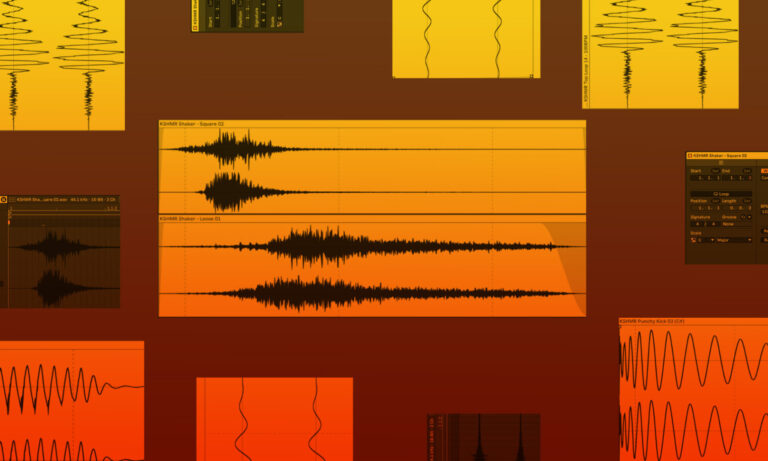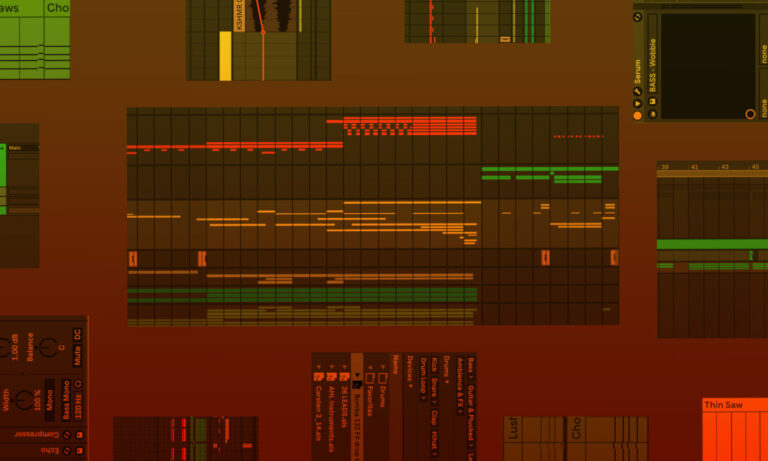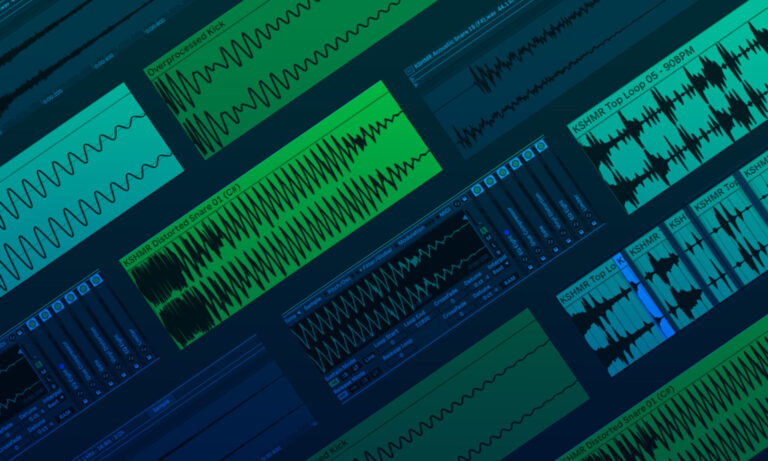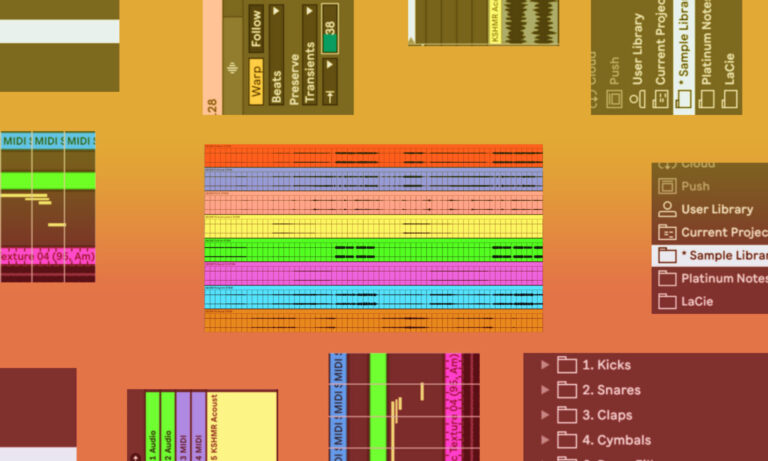- Creative sidechaining.
- Beyond the basic reverse reverb tricks.
- Using reverb’s pitch to your advantage.
- Gating and removing reverb bleed.
- Getting the most from pre-delay.
- Treating reverb like an instrument.
- Processing your reverb to define “your sound”.
Every producer knows the basics when it comes to reverb—throw on a preset, add a little for space, maybe dial it back to keep things clean—but there’s so much more to explore and many opportunities to make your track come alive and get that coveted “less is more” quality missed when you only do the bare minimum.
Done right, reverb goes from being a technical tool to adding space to a mix and morphs it into a creative weapon that adds texture, movement, and depth to your music.
In this article, I’ve broken down seven techniques to help you go beyond the basics and unlock the full potential of reverb. If you’ve ever felt like your tracks are missing something, these tips and actionable steps to try will help you rethink how reverb can work with your mix instead of against it.

The KSHMR Reverb plugin makes creative uses of reverb quick, easy, and inspiring
Reverb Ducking
Sidechain compression is great for creating space and adding movement in club music, but it also works wonders for controlling reverb. Using sidechain compression with a lead or vocal as the input signal instead of the conventional 4×4 kick, you can make the reverb move independently of the signal, creating clarity while letting the reverb and atmospheres interact with other track elements.
A solid approach is ducking the reverb based on a lead vocal or instrument. This keeps the lead dry and punchy when active while allowing the reverb to breathe when it’s not. It adds movement without sacrificing clarity.

KSHMR”s Reverb’s Volume Manager streamlines dynamics and volume control
Tools like KSHMR Reverb’s ducking feature simplify this by offering controls for ducking amount, release, and decay times to achieve a balanced, efficient sound.
Try This – Adjust the release time to match your track’s tempo for a rhythmic interaction between dry and wet signals, giving your mix dynamic flow.

At 122 BPM, 1/4th note is 484ms (485 is close enough)
Reverse Reverb
The reverse reverb trick is a classic studio technique for creating smooth transitions and an eerie swell between sections. Instead of relying on stock sweeps, you can run vocals through reverb, resample them in reverse, and use these elements for unique transitions. It is great for rising tension and bringing cohesion to your mix.
Often, reverse reverb is used for long sweeps over several bars. However, applying it to just the final note of a melody can create micro-tensions within shorter sections of a loop.

Reverse reverb used to be a multi-step process!
KSHMR Reverb simplifies what used to be a daunting process by letting you reverse the signal right in the plug-in, making it easy to resample then flip and automate what you printed. This way, you can achieve both long and micro reverses efficiently, adding momentum and movement to your track.
Try This – Once you’ve resampled the reversed reverb, try warping the reversed sample so it reaches the top of its swell at the best time. You’d be shocked at how much momentum even slight adjustments can bring!
Tuning Your Reverb
Reverb has tonal characteristics just like any other sound in your mix. While it inherits some tonal qualities from the instrument or channel it’s applied to, you can refine its pitch and harmonic resonance through EQ.

Cutting the low frequencies off at an A note, the root of the track
Start with EQ techniques like high and low shelves to remove excess frequencies, ensuring the reverb complements rather than drowns the mix. The more you fine-tune, the better the reverb will mesh with the track’s tonality and vibe.
Cut unnecessary low-end rumble or overly bright highs to let the reverb sit naturally within the mix.
EQ adjustments by ear often lead to more musical results than rigid, theoretical approaches. While frequency charts can guide you, your ears are the best tool.

A little bit of pitching on the reverb adds sheen and texture to the reverb
KSHMR Reverb offers advanced tools, like the octave setting, which lets you shift the reverb up or down 12 semitones. +12 semitones add a crystalline quality to the high end, while -12 semitones create a grounded texture in the lower frequencies.
Try This – Use Ableton’s Effects Rack, to isolate the octaved reverb’s frequencies and add delay. With the +12 setting and delay, the reverb creates harmonic artifacts that add texture and subtle movement, rewarding listeners with intricate details on repeated listens.
Gating The Tails
How a sound changes over time, including its reverb, directly impacts a track’s energy and groove. Long reverb tails or overly extended samples can slow momentum, which works for ambient music but can clash with a groove in dance or hip-hop. Tight controlled reverb tails keep the track moving and may help emphasize a groove.

Gating the reverb prevents the reverb from bleeding into other hits
Gates and transient detectors help reset reverb tails, preserving clarity and energy. Overlapping reverb, especially on transient-heavy instruments like pianos and guitars, muddies the mix and weakens its impact. KSHMR Reverb’s tonal reset automates this, so that each note stays clear and defined.
Tonal reset tools aren’t just for melodic elements—they’re great for drums too. Applied to snares, hi-hats, or shakers, they prevent reverb from stacking and cluttering the mix. Keeping reverb tight and transient-reactive enhances the drum bus and groove without losing energy.

Try This – Use KSHMR Reverb’s tonal reset on your drum bus to control overlapping tails, ensuring the reverb stays clear and supports the groove without clouding your mix
Pre-Delay For Movement and Clarity
Volume spikes in transient-heavy elements like drums and guitars give a track energy and clarity; these transients make a mix pop. However, when these transients pass through spatial effects like reverb, that spike in volume suddenly occupies more space in the mix as it’s washed in the effect, muddying the dry signal and dampening the bright clarity you need.

Pre-delay adds transient clarity and movement all at once!
Setting a pre-delay between 30 and 70 milliseconds ensures the dry transient hits first, allowing it to pop through before the reverb fills in behind it. This maintains clarity while still creating the spatial depth that reverb adds.
You can take it a step further by syncing pre-delay to your track’s tempo. Calculate how many milliseconds correspond to an eighth, sixteenth, or quarter note, and set the pre-delay to match. This turns the reverb into a rhythmic element that syncs with the track.
Try This – Sync pre-delay to your track’s tempo and adjust the dry-wet balance to create rhythmic swells. This adds movement and groove without extra layers in your mix.
Reverb As An Instrument
Reverb should rarely be treated as a simple set-it-and-forget-it effect. While it’s tempting to adjust the dry-wet mix and move on, doing so misses its potential as a dynamic, expressive element in your mix. Just like automating filter cutoffs or ADSR envelopes on your synths is one of the first things producers learn about, automating decay times, volume levels, and modulation amounts to make the reverb can have just as much impact on making such a critical layer of the mix feel like it actually deserves to be there. With this level of attention, reverb can fill roles like risers, sweeps, or background pads, enhancing the texture and atmosphere.
By automating parameters like a reverbs decay length, onboard EQs, and even simple volume knobs creatively, reverb becomes more than just an effect—it adds movement, dimension, and excitement, turning your mix into a living, breathing thing without having to rely on MORE white noise sweeps or one MORE crash cymbal sweep.
Try This – During a breakdown, automate your reverb send to make it the loudest part of the mix so that it really does command your listener’s attention. Let the lead synths, pads, and drums dissolve into an atmospheric wash, then pull it back to reset the energy for the next section.
Post Processing!
While presets are convenient, solely relying on them can restrict the creative potential reverb offers. Think of reverb as a foundation you can shape to fit your track. Adding saturation or distortion to the reverb creates a gritty, dystopian feel, while EQ’ing out highs and lows can give it a vintage, tin-can quality. Boosting a high shelf with an analog emulation EQ adds air and clarity, especially on vocals and synths.

A bit of saturation on your reverb can create a great, dystopian texture
These techniques let you tailor reverb to the vibe of your track.
Reverb is an ideal place to experiment, offering the flexibility to shape your song’s space and emotional tone and can quickly become the core of your track’s texture and identity.
Try This – On your aux reverb bus, add two or three plug-ins after the reverb. Loud presets meant for different sources—like an acoustic guitar preset on a saturator or a bass preset on an amp and see how much it affects and colors the entire sound bed of the track.
Bringing It All Together
The most significant A-Ha moment we hope you take away from this article is that reverb should be considered more like an instrument in its own right and not just a generic tool for space and depth.
Learning to treat it with the same attention as you would a lead vocal or melody line is one of the most transformative shifts you can make as a producer. It might take time to get comfortable thinking about reverb in this way, but that mindset unlocks its full potential, letting you control not just the sound but the soul of your music and tools like KSHMR Reverb is packed with features that allow you to capitalize on everything reverb can bring to your productions.






